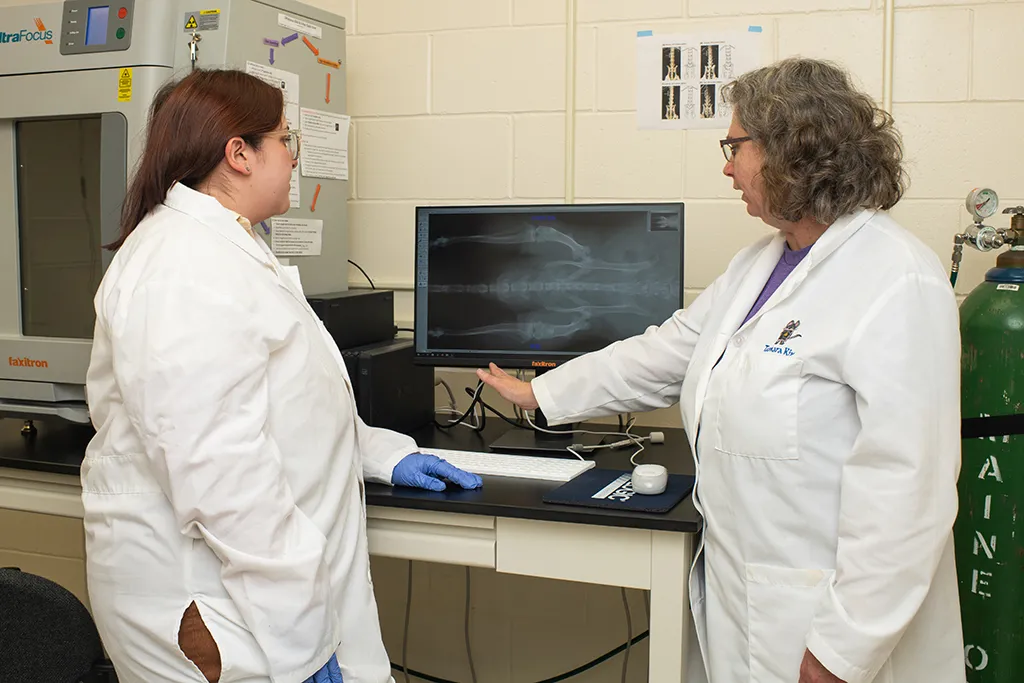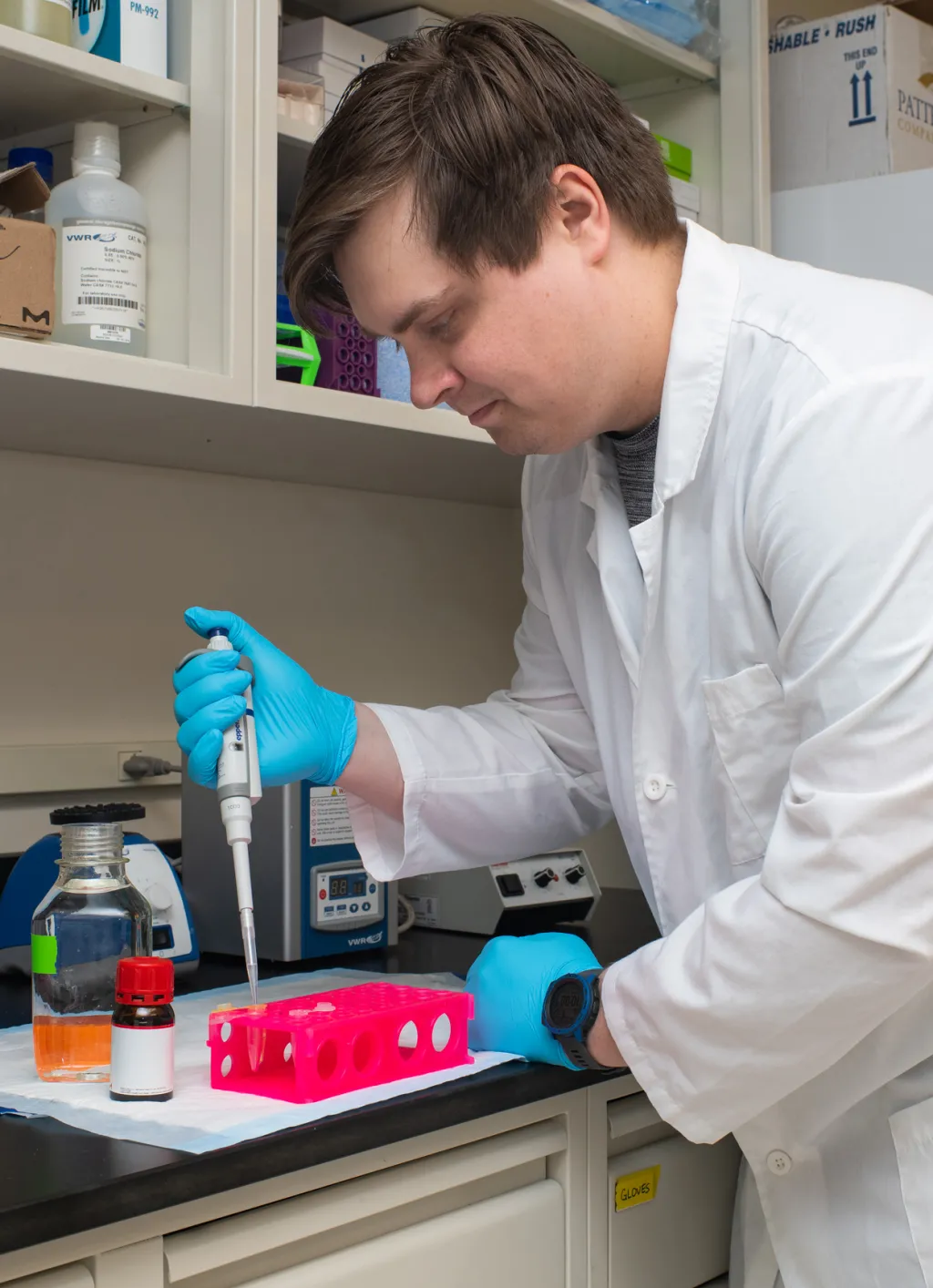Undergraduate Research Experience in the Behavior Core
I began working with the Behavior Core [at UNE] in Spring 2023. I am working on a cancer pain research project with guidance from Dr. Tamara King. [The experience] is great as I am interested in chronic pain, especially the field of oncology.
[My research] looks into how bone cancer metastases often cause periods of chronic breakthrough pain. In human patients, this pain is treated with opioid medication, but has proven to be ineffective. I have been culturing a line of Lewis lung carcinoma cells and then injecting them into the femurs of mice.
Working with the Behavior Core staff has been one of the most rewarding and stress-free tasks I have engaged in at the University. The welcoming environment allowed me to feel comfortable asking questions and asking for help when needed. The Behavior Core focuses on fostering a positive learning environment where students can explore their personal interests and engage in meaningful research.
During my time in the LMA space, I have observed some amazing findings with my cancer mice. These findings have motivated me to pursue cancer research throughout my medical school journey. Because the Behavior Core [at UNE] provides these spaces, I have been able to advance my knowledge of breakthrough pain and I have been able to excel in critical analysis and reasoning.
Kahn Summer Research Fellowship
I found out about the Kahn Summer Research Fellowship program at UNE and decided to put together a proposal to help support my research.
After receiving the fellowship for Summer 2023, I have had further training [with the mice] on handling, injections, how to conduct surgery, as well as the locomotor assay (LMA) and the weight-bearing test. Without [this fellowship] and Behavior Core, I would not have been able to make so much progress on my research project this summer. Not only do I feel confident in my own abilities, but I feel as though I am now well equipped to teach my peers the same things that the Behavior Core has taught me.



